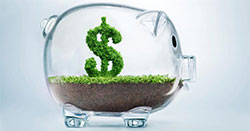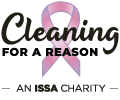Articles
Bidding in the Age of Sustainability
Categories: Cleaning Best Practices, Cleaning for Health & Safety, Sustainability & ESG
By William Griffin | September 10, 2018 << Back to Articles
Companies and contractors are adopting sustainable cleaning as the new way of doing business, and have found it to be a good strategy. In the early years, sustainable cleaning and products were provided at premium prices. But more recently—and despite the higher expenses associated with green cleaning supplies—the costs have shrunk and there are often hidden savings and benefits to be found when implementing sustainable cleaning methods.
Bidding on Sustainable Cleaning
Sustainable and traditional cleaning costs should be somewhat similar to one another; labor, supplies, chemicals, and equipment are part of either budget, in addition to overhead for running a business.
In fact, labor costs may not change as a result of using sustainable products to clean a facility, because it may not take any longer to use a sustainable product when cleaning a surface. You can still use standard production rates and square-foot costs in your calculations, unless there are special tasks or circumstances the customer requires that will reduce the rate of production.
Depending on the cleaning task, expect an hourly production rate somewhere between 1,500 and 7,500 square feet per hour. The final production rate always boils down to what types of areas you are cleaning, what types of services you are providing, and how well you engineer and manage the work.
Anticipating Costs
When estimating product costs, add 3 to 5 percent to the cost of supplies, equipment, and chemicals to ensure you can cover the slightly higher cost of sustainable products, such as paper products, plastic liners, and equipment, which are normally more expensive than the nonsustainable items. The best source of accurate costs for price comparison is your local sanitary supply distributor. Your distributor will know what’s available on the market and have the most current prices available.
There is no good way to bury or hide these increases; you will have to pass them on to the customer. Another suggestion: If you can’t cover the cost of sustainable products with your overhead or profit, find ways to be more efficient and cover them through labor savings. For example, even though you may pay a little more up front for products, you may be surprised to find you can reduce costs over time due to other savings that stem from product changes. Examples include losing less staff time to injuries from working with dangerous chemicals, reduction of water and chemical use, and less dust in the air from using vacuums that do a better job of containing soil.
The Future of Sustainable Cleaning
In another 10 to 15 years, sustainable cleaning will be the only way cleaning is done. Manufacturers will phase out nonsustainable chemicals, products, and equipment to reduce risk and liability and to meet the market demand for better, safer, and more productive ways of cleaning. Widespread use of engineered- and electrically-activated water will also increase, as it makes no economic sense to purchase and ship chemicals if you can create what you need on site. In 5 to 10 years, we will also see micro-robots handling the mopping, sweeping, and vacuuming in commercial buildings and homes.
This is not the end of the cleaning business; it’s actually an entirely new phase of professional development and growth for the industry. However, it may impact how we bid out our services in the long term.
This article originally appeared in the April 2017 issue of Cleaning & Maintenance Management.
About the Author.
With more than 26 years of industry consulting experience, speaker and writer William Griffin is president of Cleaning Consultant Services, Inc. and president of the International Custodial Advisors Network, Inc. He can be reached at[email protected]; phone, 206-682-9748, or, for more information, visit www.cleaningconsultants.com.





